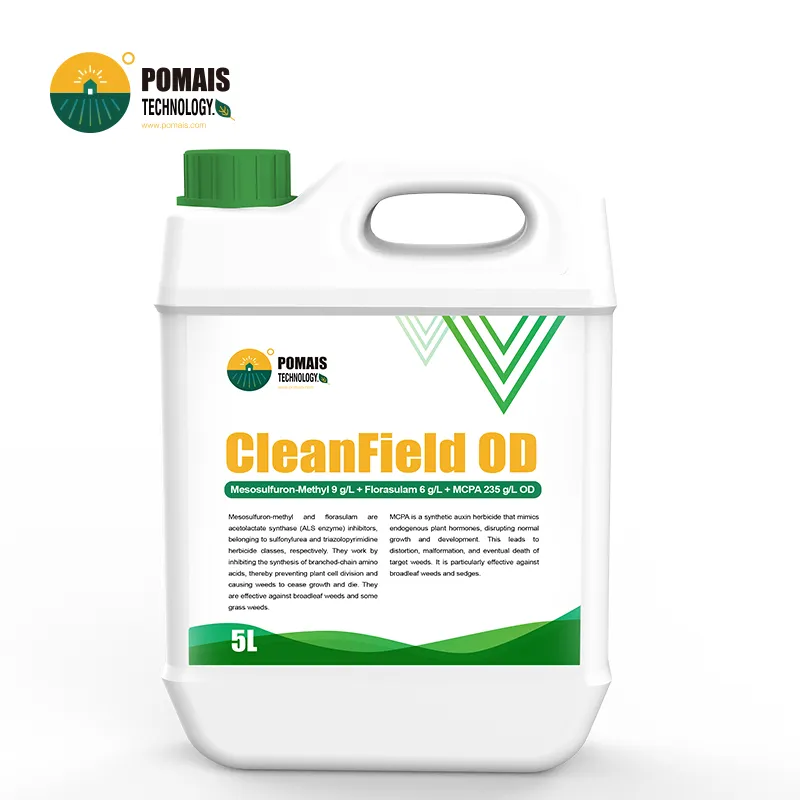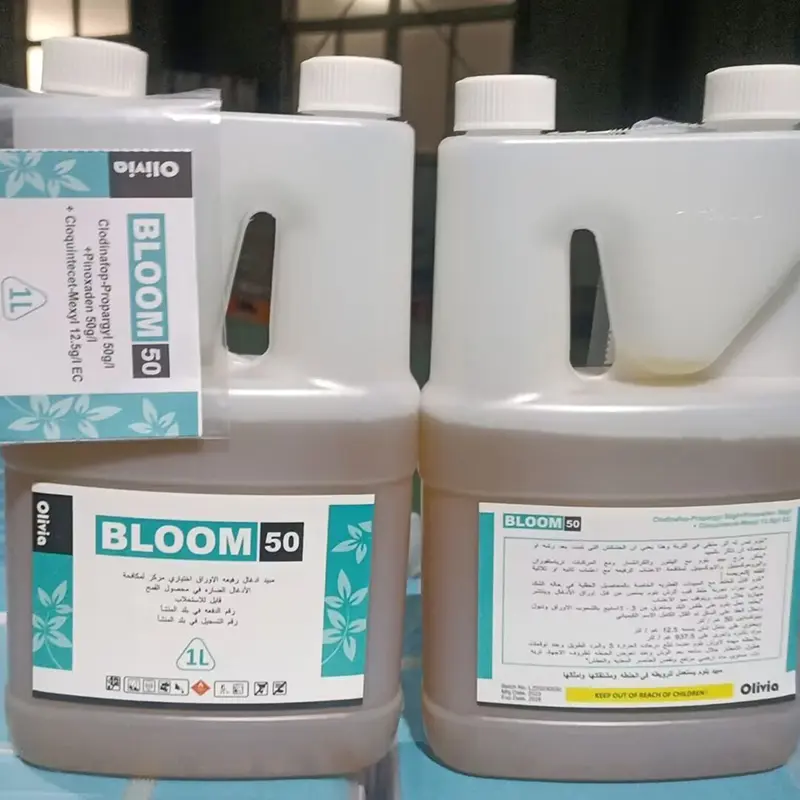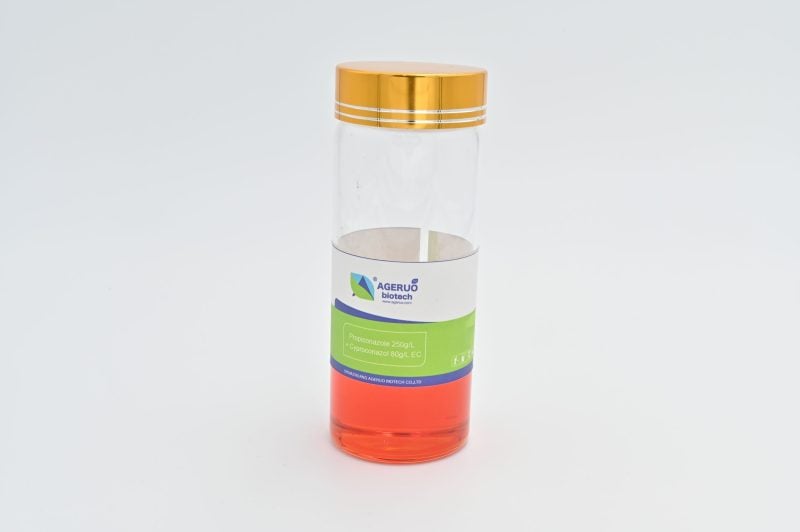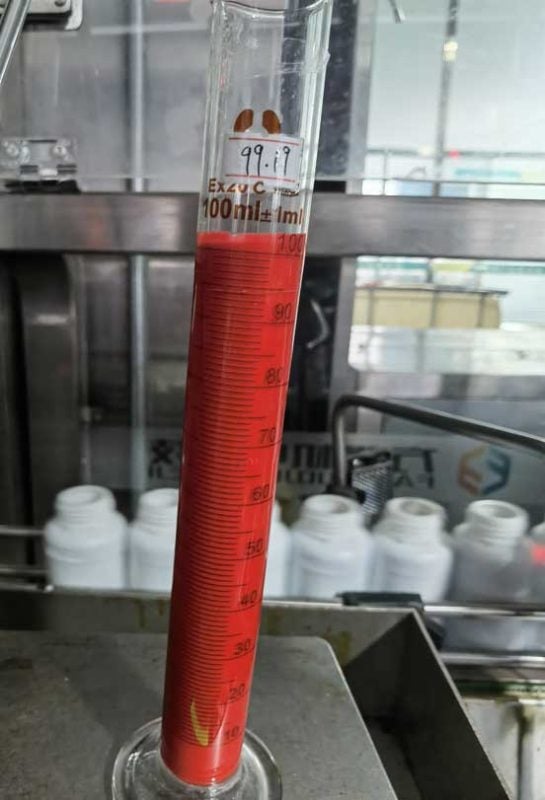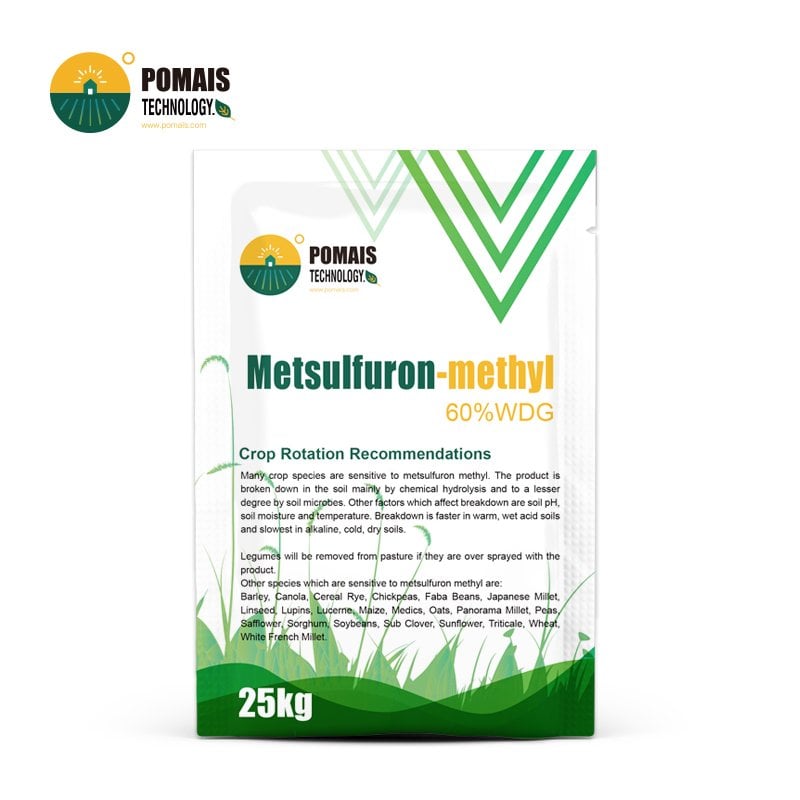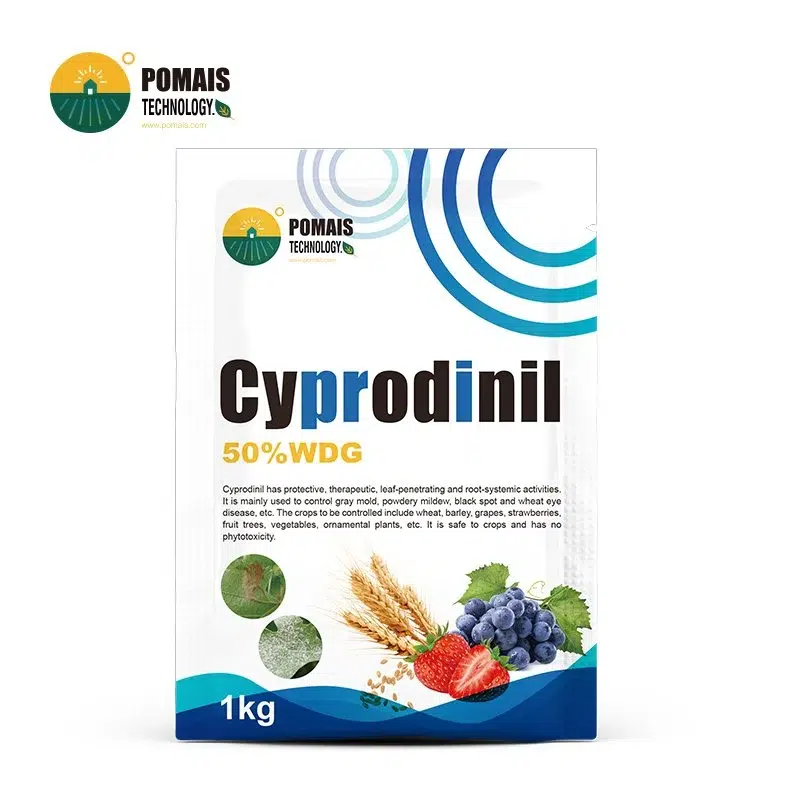Mesosulfuron-Methyl 9 g/L + Florasulam 6 g/L + MCPA 235 g/L OD
We supply Mesosulfuron-Methyl 9 g/L + Florasulam 6 g/L + MCPA 235 g/L OD—a post-emergence cereal herbicide built to clean up grass + broadleaf complexes in a single pass. The ALS (Group 2) + auxin (Group 4) stack broadens spectrum and supports resistance programs, while the oil-dispersion (OD) system drives fast wetting and uptake in cool, variable spring conditions—often without extra adjuvant (label-dependent). Manufacturer-direct with OEM/private label, COA/MSDS, and export-ready packs (1 L / 5 L / 10 L retail; 200 L bulk). Use strictly per destination-country labels; farm rates are not published here.
- Designed for Professional Buyers & Bulk Orders
- This product is available for business purchase and large-scale distribution.
- We support custom packaging, labeling, and formulation to meet your market needs.
- Let’s build your brand together.

About Mesosulfuron-Methyl 9 g/L + Florasulam 6 g/L + MCPA 235 g/L OD
About Mesosulfuron-Methyl 9 g/L + Florasulam 6 g/L + MCPA 235 g/L OD
| Mesosulfuron-methyl | 9 g/L; ALS inhibitor (HRAC Group 2); targets grass weeds (black-grass, wild oats, ryegrass) |
| Florasulam | 6 g/L; ALS inhibitor (Group 2); extends broadleaf spectrum (cleavers, chickweed, mayweed, poppy) |
| MCPA | 235 g/L; Synthetic auxin (Group 4); strengthens broadleaf control (mustards, knotweeds, poppy) |
| Formulation | OD (Oil Dispersion) — built-in adjuvancy for fast wetting, strong leaf retention, cool-weather uptake |
| Positioning | Post-emergence cereals; best on small, actively growing weeds within label BBCH window |
| Crop Fit (market-dependent) | Winter/spring wheat, barley, triticale (oats typically excluded unless locally labeled) |
| Weed Complex | Grass + broadleaf clean-up in one pass; use after pre-em residuals to finish escapes |
| Packs | 1 L / 5 L / 10 L HDPE retail; 200 L drums (bulk) |
| Documents | COA + MSDS per lot; product data sheet; batch traceability photos (unit/carton/pallet) |
| OEM / Branding | Private label; multilingual artwork; GS1 barcodes; QR/anti-counterfeit; batch/date coding |
| Lead Time & MOQ | Typically 2–3 weeks post PO + artwork lock; MOQs by pack size; synchronized multi-SKU runs |
| Logistics | Sea/air/LCL; mixed-SKU consolidation with companion cereal herbicides |
| Quote Inputs (send us) | Country/authority, crops & target weeds, BBCH timing, pack sizes, label languages/branding, monthly volume, incoterms |
| Label Note | Crop/weed scope, intervals, and any adjuvant guidance are destination-country label–dependent |
Mesosulfuron-Methyl 9 g/L + Florasulam 6 g/L + MCPA 235 g/L OD
We supply Mesosulfuron-Methyl 9 g/L + Florasulam 6 g/L + MCPA 235 g/L OD—a post-emergence cereal herbicide designed to clear grass + broadleaf complexes in one pass. Built on an ALS (Group 2) + auxin (Group 4) stack, it combines mesosulfuron-methyl + florasulam for ALS inhibition with MCPA for auxinic activity, widening spectrum and supporting rotation discipline. The oil-dispersion (OD) system delivers built-in adjuvancy for fast wetting, strong leaf retention, and reliable uptake in cool, variable spring windows—often without extra adjuvant where labels permit. Typical fit is winter/spring cereals (e.g., wheat, barley; market-dependent) targeting small, actively growing weeds from BBCH ~12 to pre-stem-elongation (e.g., ≤31/39). Label examples include tough grasses (Alopecurus myosuroides black-grass, Avena fatua wild oats, Lolium ryegrass, Bromus spp., Phalaris/Beckmannia) plus key broadleaves (Stellaria chickweed, Galium cleavers, Capsella shepherd’s purse, Matricaria mayweed/chamomile, Papaver poppy, Polygonum knotweeds, Sinapis mustards)—final scope is label-dependent. In programs, this OD is positioned after pre-em residuals to finish survivors and mixed flushes; it rotates cleanly with non-ALS partners. Tank-mix/sequence strictly per label; run a jar test, maintain agitation, and favor neutral to mildly acidic water. Manufacturer-direct supply with OEM/private label, multilingual artwork (GS1/QR/anti-counterfeit), per-lot COA/MSDS, and export-ready packs (1 L / 5 L / 10 L retail; 200 L bulk). Use strictly per destination-country labels; this page covers the 9 + 6 + 235 g/L OD specification only.
Real-Field Weed Complexes in Cereals
This post-emergence cereal herbicide (OD) is engineered to clean up mixed grass + broadleaf infestations in one pass—especially in cool, variable spring windows where uptake is often unreliable. It is typically positioned after pre-emergence residuals to finish survivors and staggered flushes, reducing extra passes and tank complexity.
Spectrum in practice (label-dependent examples)
- Problem grass weeds: Alopecurus myosuroides (black-grass), Avena fatua (wild oats), Lolium spp. (ryegrasses), Bromus spp., Phalaris/Beckmannia spp., selected Poa spp.
- Key broadleaves: Stellaria media (chickweed), Galium aparine (cleavers), Capsella bursa-pastoris (shepherd’s purse), Matricaria/Anthemis spp. (mayweed/chamomile), Papaver rhoeas (poppy), Polygonum spp. (knotweeds), Sinapis arvensis (wild mustard), Veronica spp. (speedwells), Chenopodium album (lambsquarters).
Final crop/weed lists are governed by destination-country labels.
Situations it resolves for growers and advisors
- Mixed populations in the same field: one pass for grass + broadleaf, fewer rescue runs.
- Cold, short spray windows: OD delivers built-in adjuvancy for fast wetting/retention when mornings are cool and days are short.
- Patchy emergence after pre-em: catches late flushes and residual escapes to restore uniformity.
- Program discipline & resistance stewardship: the ALS (Group 2) + auxin (Group 4) stack broadens spectrum and enables cleaner rotations with non-ALS partners.
- Operational efficiency: fewer tank partners to source, simpler inventory, tighter scheduling around weather.
Results buyers look for (program value, not rates)
- Canopy cleanliness through the labeled interval, supporting combine speed and lower dockage from weed seed.
- Even crop competition by checking early weed biomass, improving stand uniformity.
- Predictable fit from BBCH ~12 to pre-stem-elongation (market-dependent), when weeds are small and actively growing.
Important boundary conditions (for correct expectations)
- Performance is coverage- and growth-stage-dependent; target small, actively growing weeds.
- In areas with confirmed ALS resistance (e.g., black-grass/ryegrass), rely on program diversity (pre-em residuals and non-ALS partners) rather than single-tool control.
- Crop scope (e.g., winter/spring wheat, barley) and any exclusions (e.g., oats) must follow local labels.
Technical Identity & MoA
Actives & strengths: Mesosulfuron-methyl 9 g/L + Florasulam 6 g/L (ALS, HRAC 2) + MCPA 235 g/L (auxin, HRAC 4).
Formulation: OD (Oil Dispersion)—built-in adjuvancy for fast wetting, strong leaf retention, and reliable uptake in cool spring windows.
Mode of action: Dual ALS inhibition (blocks branched-chain amino-acid synthesis) + auxinic growth disruption, widening spectrum across grass + broadleaf complexes.
Positioning: Post-emergence cereals; best on small, actively growing weeds within label BBCH.
Differentiators: Triple-active synergy, rotation-friendly with non-ALS partners, fewer tank components, consistent performance when weather is variable.
Label note: Crop/weed scope, intervals, and any adjuvant guidance are destination-country label–dependent.
Target Crops & Weeds — On-Label Fit
Crops (market-dependent): Winter/spring wheat, barley, triticale; typically not for oats unless locally labeled.
Grass weeds: Black-grass, wild oats, Italian ryegrass, brome groups (label lists prevail).
Broadleaf weeds: Chickweed, cleavers, mayweed/chamomile, poppy, shepherd’s purse, knotweeds, mustards.
Best timing: Small, actively growing weeds in cool spring windows; integrate after pre-em residuals.
Label note: Final crop/weed scope and intervals are destination-country label–dependent.
Application Window & Principles — Field Use Basics
Timing: Post-emergence in cereals, from BBCH ~12 to pre-stem-elongation (market-dependent); target small, actively growing weeds in cool spring windows.
Coverage: Use calibrated boom sprayers; medium droplets, even leaf coverage; keep travel speed/pressure consistent.
Formulation edge (OD): Built-in adjuvancy supports fast wetting & uptake; extra adjuvant only if label requires.
Mixing & water: Start with clean water (neutral → mildly acidic), agitation ON; add partners in label order; jar test before new mixes.
Sequencing: Position after pre-em residuals to finish escapes; rotate with non-ALS partners in the program.
Rainfastness & intervals: OD improves early retention; follow destination-country labels for re-spray guidance and intervals.
Performance Proof Points — What You’ll See
- Fast uptake in cool windows: OD system drives quick wetting/retention for consistent post-em results in early spring.
- One-pass clean-up: Controls grass + broadleaf complexes when weeds are small and actively growing, reducing rescue passes.
- Uniform stands: Cuts early weed biomass to protect cereal tillering and canopy development.
- Clean finish to harvest: Supports combine speed and lowers weed-seed contamination for marketable grain.
- Program efficiency: Fewer tank partners, simpler logistics, predictable scheduling across fields.
- Label note: Crop/weed scope and intervals follow destination-country labels.
Resistance & Program Fit — Built for Rotations
MoA stack: Dual ALS (Group 2) + auxin (Group 4) broadens spectrum and supports season-long stewardship.
Rotation rule: Avoid back-to-back ALS-only passes; alternate with non-ALS partners across the program.
Program slot: Deploy post-emergence after pre-em residuals to finish escapes and mixed flushes.
ALS resistance reality: Where black-grass/ryegrass resistance is confirmed, rely on diverse MoA + residuals, not a single tool.
Field cue: Target small, actively growing weeds; coverage quality drives outcomes.
Label note: Final crop/weed scope and intervals follow destination-country labels.
Tank-Mix & Sequencing — Simple, Label-Driven
Positioning: Slot post-emergence after pre-em residuals to finish escapes; rotate with non-ALS partners across the season.
Mixing order: Water (agitation ON) → dispersible solids (if any) → this OD → EC/SL/ME partners → adjuvant only if label requires.
Water quality: Use clean, neutral to mildly acidic water; avoid strongly alkaline systems.
Jar test: Validate new partner combos with a jar test; check for separation/settling before tanking up.
Sprayability: Keep steady agitation and moderate droplet sizes for even leaf films.
Intervals & rainfastness: Early retention is aided by OD; follow destination-country labels for intervals/re-coverage.
Do/Don’t: Do integrate with residual programs; Don’t run back-to-back ALS-only passes.
Packaging & OEM — Built for Fast Market Entry
Retail packs (OD): 1 L / 5 L / 10 L HDPE bottles or jerrycans, tamper-evident caps, induction liners; carton counts optimized for cube and weight.
Bulk: 200 L drums for distributor batching; palletized for sea/air/LCL lanes.
Artwork & branding: Private-label ready with multilingual artwork, GS1 barcodes, QR/anti-counterfeit, batch/date coding; label text aligned to destination market.
Customization: Bottle shape (round/square), handle style, cap color, pour spout, outer-carton printing, pallet scheme.
Deliverables per lot: COA + MSDS, product data sheet, pack photos (unit/carton/pallet) for listings.
Operations: Typical MOQs by pack size; synchronized multi-SKU runs; consolidation with companion cereal herbicides on request.
Lead time: Production queued after PO + artwork lock; reliable slots for season launches.
Quality & Compliance — What Ships, Every Time
Release controls: Active assay (all three), viscosity window, pH (emulsion), storage stability (accelerated/freeze–thaw), phase separation check.
Documentation: COA + MSDS per lot; product data sheet; artwork aligned to destination market text.
Traceability: Batch codes on unit/carton/pallet; photo pack for listings and audits.
Change control: Any bottle/closure/formulation tweaks are notified and approved before adoption.
Price & Supply — What Drives Your Quote
Price drivers: Pack size (1/5/10 L), bulk (200 L), artwork languages, customization level, volume cadence, destination & lanes.
Supply model: Made-to-order with synchronized slots; mixed-SKU consolidation with companion cereal herbicides.
Lead time: Typically 2–3 weeks after PO + artwork lock (seasonal allocation available).
For a fast quote: Send target market, crops & weeds, preferred packs, languages, monthly volume, and incoterms.
FAQ
Do I need an extra adjuvant?
OD provides built-in adjuvancy; follow the destination-country label.
When is the best window?
Post-emergence on small, actively growing weeds from BBCH ~12 to pre-stem-elongation (market-dependent).
What does it control?
Mixed grass + broadleaf complexes (e.g., black-grass, wild oats, cleavers, chickweed); final scope is label-dependent.
Can it rotate well?
Yes—ALS (Group 2) + auxin (Group 4) stack fits cleanly with non-ALS partners.
What packs are standard?
1 L / 5 L / 10 L retail; 200 L bulk; OEM/private label supported.
Configure Your OD Program
Tell us your country/authority, crops & target weeds, BBCH timing, pack sizes (1/5/10 L or 200 L), label languages & branding, and monthly volume/incoterms. We’ll return a configured supply plan, COA/MSDS pack, and a production & delivery schedule aligned to your launch.
| Mesosulfuron-methyl | 9 g/L; ALS inhibitor (HRAC Group 2); targets grass weeds (black-grass, wild oats, ryegrass) |
| Florasulam | 6 g/L; ALS inhibitor (Group 2); extends broadleaf spectrum (cleavers, chickweed, mayweed, poppy) |
| MCPA | 235 g/L; Synthetic auxin (Group 4); strengthens broadleaf control (mustards, knotweeds, poppy) |
| Formulation | OD (Oil Dispersion) — built-in adjuvancy for fast wetting, strong leaf retention, cool-weather uptake |
| Positioning | Post-emergence cereals; best on small, actively growing weeds within label BBCH window |
| Crop Fit (market-dependent) | Winter/spring wheat, barley, triticale (oats typically excluded unless locally labeled) |
| Weed Complex | Grass + broadleaf clean-up in one pass; use after pre-em residuals to finish escapes |
| Packs | 1 L / 5 L / 10 L HDPE retail; 200 L drums (bulk) |
| Documents | COA + MSDS per lot; product data sheet; batch traceability photos (unit/carton/pallet) |
| OEM / Branding | Private label; multilingual artwork; GS1 barcodes; QR/anti-counterfeit; batch/date coding |
| Lead Time & MOQ | Typically 2–3 weeks post PO + artwork lock; MOQs by pack size; synchronized multi-SKU runs |
| Logistics | Sea/air/LCL; mixed-SKU consolidation with companion cereal herbicides |
| Quote Inputs (send us) | Country/authority, crops & target weeds, BBCH timing, pack sizes, label languages/branding, monthly volume, incoterms |
| Label Note | Crop/weed scope, intervals, and any adjuvant guidance are destination-country label–dependent |
Mesosulfuron-Methyl 9 g/L + Florasulam 6 g/L + MCPA 235 g/L OD
We supply Mesosulfuron-Methyl 9 g/L + Florasulam 6 g/L + MCPA 235 g/L OD—a post-emergence cereal herbicide designed to clear grass + broadleaf complexes in one pass. Built on an ALS (Group 2) + auxin (Group 4) stack, it combines mesosulfuron-methyl + florasulam for ALS inhibition with MCPA for auxinic activity, widening spectrum and supporting rotation discipline. The oil-dispersion (OD) system delivers built-in adjuvancy for fast wetting, strong leaf retention, and reliable uptake in cool, variable spring windows—often without extra adjuvant where labels permit. Typical fit is winter/spring cereals (e.g., wheat, barley; market-dependent) targeting small, actively growing weeds from BBCH ~12 to pre-stem-elongation (e.g., ≤31/39). Label examples include tough grasses (Alopecurus myosuroides black-grass, Avena fatua wild oats, Lolium ryegrass, Bromus spp., Phalaris/Beckmannia) plus key broadleaves (Stellaria chickweed, Galium cleavers, Capsella shepherd’s purse, Matricaria mayweed/chamomile, Papaver poppy, Polygonum knotweeds, Sinapis mustards)—final scope is label-dependent. In programs, this OD is positioned after pre-em residuals to finish survivors and mixed flushes; it rotates cleanly with non-ALS partners. Tank-mix/sequence strictly per label; run a jar test, maintain agitation, and favor neutral to mildly acidic water. Manufacturer-direct supply with OEM/private label, multilingual artwork (GS1/QR/anti-counterfeit), per-lot COA/MSDS, and export-ready packs (1 L / 5 L / 10 L retail; 200 L bulk). Use strictly per destination-country labels; this page covers the 9 + 6 + 235 g/L OD specification only.
Real-Field Weed Complexes in Cereals
This post-emergence cereal herbicide (OD) is engineered to clean up mixed grass + broadleaf infestations in one pass—especially in cool, variable spring windows where uptake is often unreliable. It is typically positioned after pre-emergence residuals to finish survivors and staggered flushes, reducing extra passes and tank complexity.
Spectrum in practice (label-dependent examples)
- Problem grass weeds: Alopecurus myosuroides (black-grass), Avena fatua (wild oats), Lolium spp. (ryegrasses), Bromus spp., Phalaris/Beckmannia spp., selected Poa spp.
- Key broadleaves: Stellaria media (chickweed), Galium aparine (cleavers), Capsella bursa-pastoris (shepherd’s purse), Matricaria/Anthemis spp. (mayweed/chamomile), Papaver rhoeas (poppy), Polygonum spp. (knotweeds), Sinapis arvensis (wild mustard), Veronica spp. (speedwells), Chenopodium album (lambsquarters).
Final crop/weed lists are governed by destination-country labels.
Situations it resolves for growers and advisors
- Mixed populations in the same field: one pass for grass + broadleaf, fewer rescue runs.
- Cold, short spray windows: OD delivers built-in adjuvancy for fast wetting/retention when mornings are cool and days are short.
- Patchy emergence after pre-em: catches late flushes and residual escapes to restore uniformity.
- Program discipline & resistance stewardship: the ALS (Group 2) + auxin (Group 4) stack broadens spectrum and enables cleaner rotations with non-ALS partners.
- Operational efficiency: fewer tank partners to source, simpler inventory, tighter scheduling around weather.
Results buyers look for (program value, not rates)
- Canopy cleanliness through the labeled interval, supporting combine speed and lower dockage from weed seed.
- Even crop competition by checking early weed biomass, improving stand uniformity.
- Predictable fit from BBCH ~12 to pre-stem-elongation (market-dependent), when weeds are small and actively growing.
Important boundary conditions (for correct expectations)
- Performance is coverage- and growth-stage-dependent; target small, actively growing weeds.
- In areas with confirmed ALS resistance (e.g., black-grass/ryegrass), rely on program diversity (pre-em residuals and non-ALS partners) rather than single-tool control.
- Crop scope (e.g., winter/spring wheat, barley) and any exclusions (e.g., oats) must follow local labels.
Technical Identity & MoA
Actives & strengths: Mesosulfuron-methyl 9 g/L + Florasulam 6 g/L (ALS, HRAC 2) + MCPA 235 g/L (auxin, HRAC 4).
Formulation: OD (Oil Dispersion)—built-in adjuvancy for fast wetting, strong leaf retention, and reliable uptake in cool spring windows.
Mode of action: Dual ALS inhibition (blocks branched-chain amino-acid synthesis) + auxinic growth disruption, widening spectrum across grass + broadleaf complexes.
Positioning: Post-emergence cereals; best on small, actively growing weeds within label BBCH.
Differentiators: Triple-active synergy, rotation-friendly with non-ALS partners, fewer tank components, consistent performance when weather is variable.
Label note: Crop/weed scope, intervals, and any adjuvant guidance are destination-country label–dependent.
Target Crops & Weeds — On-Label Fit
Crops (market-dependent): Winter/spring wheat, barley, triticale; typically not for oats unless locally labeled.
Grass weeds: Black-grass, wild oats, Italian ryegrass, brome groups (label lists prevail).
Broadleaf weeds: Chickweed, cleavers, mayweed/chamomile, poppy, shepherd’s purse, knotweeds, mustards.
Best timing: Small, actively growing weeds in cool spring windows; integrate after pre-em residuals.
Label note: Final crop/weed scope and intervals are destination-country label–dependent.
Application Window & Principles — Field Use Basics
Timing: Post-emergence in cereals, from BBCH ~12 to pre-stem-elongation (market-dependent); target small, actively growing weeds in cool spring windows.
Coverage: Use calibrated boom sprayers; medium droplets, even leaf coverage; keep travel speed/pressure consistent.
Formulation edge (OD): Built-in adjuvancy supports fast wetting & uptake; extra adjuvant only if label requires.
Mixing & water: Start with clean water (neutral → mildly acidic), agitation ON; add partners in label order; jar test before new mixes.
Sequencing: Position after pre-em residuals to finish escapes; rotate with non-ALS partners in the program.
Rainfastness & intervals: OD improves early retention; follow destination-country labels for re-spray guidance and intervals.
Performance Proof Points — What You’ll See
- Fast uptake in cool windows: OD system drives quick wetting/retention for consistent post-em results in early spring.
- One-pass clean-up: Controls grass + broadleaf complexes when weeds are small and actively growing, reducing rescue passes.
- Uniform stands: Cuts early weed biomass to protect cereal tillering and canopy development.
- Clean finish to harvest: Supports combine speed and lowers weed-seed contamination for marketable grain.
- Program efficiency: Fewer tank partners, simpler logistics, predictable scheduling across fields.
- Label note: Crop/weed scope and intervals follow destination-country labels.
Resistance & Program Fit — Built for Rotations
MoA stack: Dual ALS (Group 2) + auxin (Group 4) broadens spectrum and supports season-long stewardship.
Rotation rule: Avoid back-to-back ALS-only passes; alternate with non-ALS partners across the program.
Program slot: Deploy post-emergence after pre-em residuals to finish escapes and mixed flushes.
ALS resistance reality: Where black-grass/ryegrass resistance is confirmed, rely on diverse MoA + residuals, not a single tool.
Field cue: Target small, actively growing weeds; coverage quality drives outcomes.
Label note: Final crop/weed scope and intervals follow destination-country labels.
Tank-Mix & Sequencing — Simple, Label-Driven
Positioning: Slot post-emergence after pre-em residuals to finish escapes; rotate with non-ALS partners across the season.
Mixing order: Water (agitation ON) → dispersible solids (if any) → this OD → EC/SL/ME partners → adjuvant only if label requires.
Water quality: Use clean, neutral to mildly acidic water; avoid strongly alkaline systems.
Jar test: Validate new partner combos with a jar test; check for separation/settling before tanking up.
Sprayability: Keep steady agitation and moderate droplet sizes for even leaf films.
Intervals & rainfastness: Early retention is aided by OD; follow destination-country labels for intervals/re-coverage.
Do/Don’t: Do integrate with residual programs; Don’t run back-to-back ALS-only passes.
Packaging & OEM — Built for Fast Market Entry
Retail packs (OD): 1 L / 5 L / 10 L HDPE bottles or jerrycans, tamper-evident caps, induction liners; carton counts optimized for cube and weight.
Bulk: 200 L drums for distributor batching; palletized for sea/air/LCL lanes.
Artwork & branding: Private-label ready with multilingual artwork, GS1 barcodes, QR/anti-counterfeit, batch/date coding; label text aligned to destination market.
Customization: Bottle shape (round/square), handle style, cap color, pour spout, outer-carton printing, pallet scheme.
Deliverables per lot: COA + MSDS, product data sheet, pack photos (unit/carton/pallet) for listings.
Operations: Typical MOQs by pack size; synchronized multi-SKU runs; consolidation with companion cereal herbicides on request.
Lead time: Production queued after PO + artwork lock; reliable slots for season launches.
Quality & Compliance — What Ships, Every Time
Release controls: Active assay (all three), viscosity window, pH (emulsion), storage stability (accelerated/freeze–thaw), phase separation check.
Documentation: COA + MSDS per lot; product data sheet; artwork aligned to destination market text.
Traceability: Batch codes on unit/carton/pallet; photo pack for listings and audits.
Change control: Any bottle/closure/formulation tweaks are notified and approved before adoption.
Price & Supply — What Drives Your Quote
Price drivers: Pack size (1/5/10 L), bulk (200 L), artwork languages, customization level, volume cadence, destination & lanes.
Supply model: Made-to-order with synchronized slots; mixed-SKU consolidation with companion cereal herbicides.
Lead time: Typically 2–3 weeks after PO + artwork lock (seasonal allocation available).
For a fast quote: Send target market, crops & weeds, preferred packs, languages, monthly volume, and incoterms.
FAQ
Do I need an extra adjuvant?
OD provides built-in adjuvancy; follow the destination-country label.
When is the best window?
Post-emergence on small, actively growing weeds from BBCH ~12 to pre-stem-elongation (market-dependent).
What does it control?
Mixed grass + broadleaf complexes (e.g., black-grass, wild oats, cleavers, chickweed); final scope is label-dependent.
Can it rotate well?
Yes—ALS (Group 2) + auxin (Group 4) stack fits cleanly with non-ALS partners.
What packs are standard?
1 L / 5 L / 10 L retail; 200 L bulk; OEM/private label supported.
Configure Your OD Program
Tell us your country/authority, crops & target weeds, BBCH timing, pack sizes (1/5/10 L or 200 L), label languages & branding, and monthly volume/incoterms. We’ll return a configured supply plan, COA/MSDS pack, and a production & delivery schedule aligned to your launch.
Related Products
Latest News

